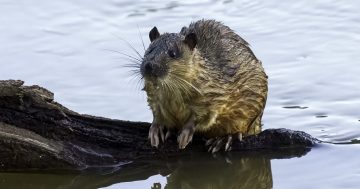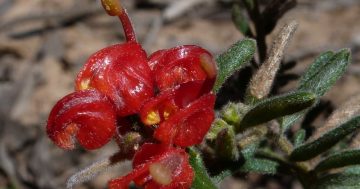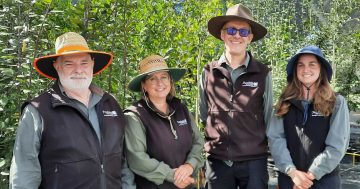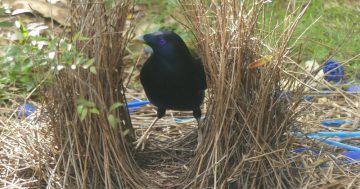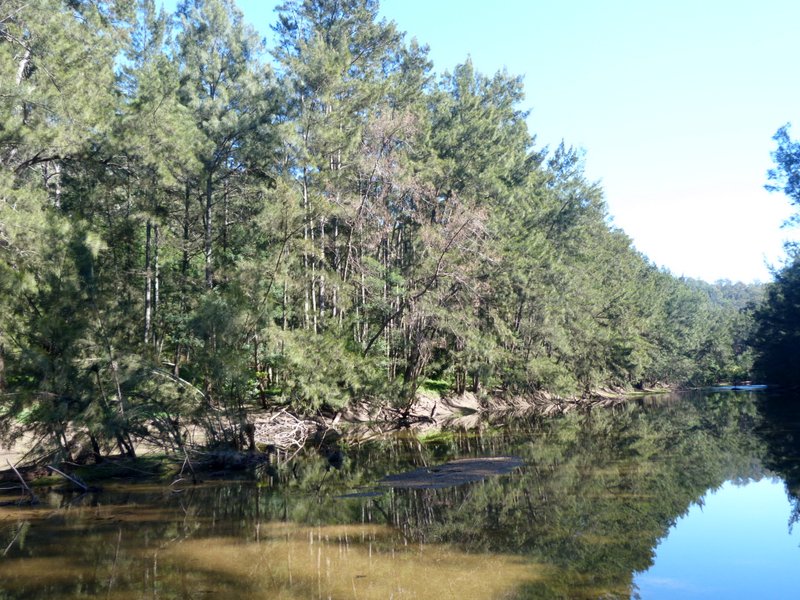
The River Oak casuarina species grows only on river and stream banks. Photo: Ian Fraser.
I love standing among the she-oaks, whose pine-like foliage whispers in the wind like no other tree I know.
Some have said they sound like Aeolian harps, old stringed instruments hung in a breezy place for the wind to play, blowing over the strings.
She-oaks are ancient Australians whose ancestors probably lived on seashores (as some still do), where they developed drought-evading tricks to survive in salt-dried soil. The most obvious of these is in the leaves which have shrunk to tiny ‘teeth’ in rings around the slender branches; you can just make them out if you look, though a magnifying glass helps a lot.
Think Australian trees, think eucalypts, wattles and banksias, of course – but we should also think of she-oaks (or casuarinas, as I prefer). There are some 60 species of them here, from the coastal dunes to the central deserts and all habitats in between.
‘She-oak’ is a term that I, at least, think has been misunderstood. It is widely said to be a comparison with the ‘superior’ timber of European oak (‘she’, of course, being understood to imply inferior!).
However, I think this is another attempt to find an English meaning in a word originally of Indigenous origin. For a start, white settlers (and before them, of course, Indigenous Australians) used and valued the timber, so there was no reason to draw attention to its supposedly unsatisfactory nature.
Moreover, there is the rarely used alternative form ‘shiock’, mostly found in 19th-century accounts, and a common species found west of here is called ‘buloke’, both of which suggest that the use of ‘oak’ is a borrowing from an existing word.
The name Casuarina (also their Latin name) has a curious origin. The great Swedish biologist Carl Linnaeus thought that the foliage was like the hairy plumage of the cassowary and named it accordingly. Too many late nights working by candlelight, I reckon!
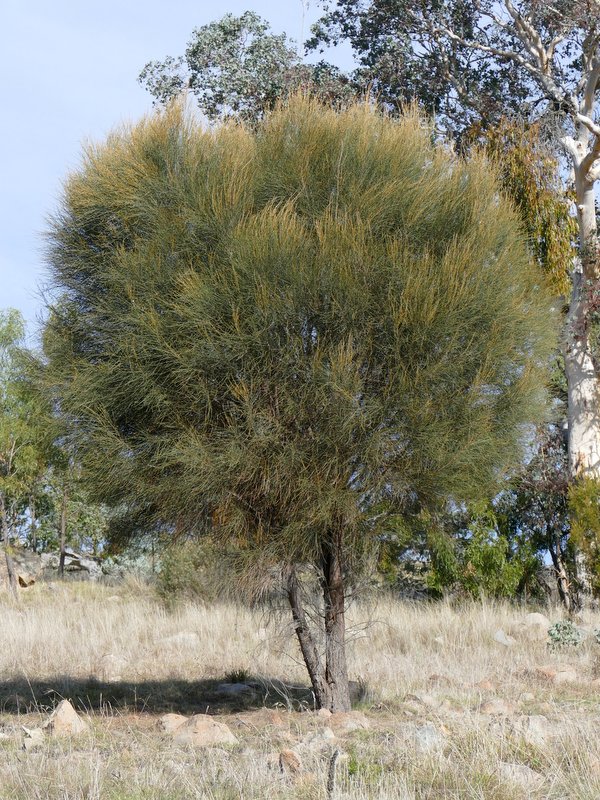
This Drooping She-oak in Canberra Nature Par is typically ‘shaggy’ in form. Photo: Ian Fraser.
None of this is as interesting as the trees themselves, of course!
Two species are fairly easy to see in Canberra and surrounds in very different settings. Drooping She-oak is a dark green smallish shaggy tree of dry, rocky slopes, especially on Mount Majura, Red Hill and along the road south of Tharwa, including Mount Tennent. River Oak, on the other hand, is a tall paler green tree that grows only along streamlines on plains, such as the banks of the lower Murrumbidgee, Cotter and Molonglo in the ACT.
The ground underneath casuarinas is often surprisingly bare of other plant growth. It seems that at least some of them produce chemicals that suppress seedlings of different species, though it’s unclear whether the chemicals are in the shed branchlets or in bacterial colonies which live in the roots.
These bacteria enable the casuarinas to fix nitrogen in the soil from the air, like members of the pea family, thus enriching the soil.
Though they look a bit like pines, they produce small brown clusters of male flowers and red-wispy female flowers, usually on separate plants. Their ancestors attracted insects to carry their pollen, but modern casuarinas cast their pollen to the wind and rely on chance for some of them to land on the right flowers. It might sound a bit iffy, but it clearly works; it does explain why casuarinas tend to grow close together in stands.
The tiny dust-like seeds have little papery wings which help them float on the wind away from the shade of their parents. Surprisingly these minute seeds, including those of the local Drooping She-oak, are the key diet of a big bird.
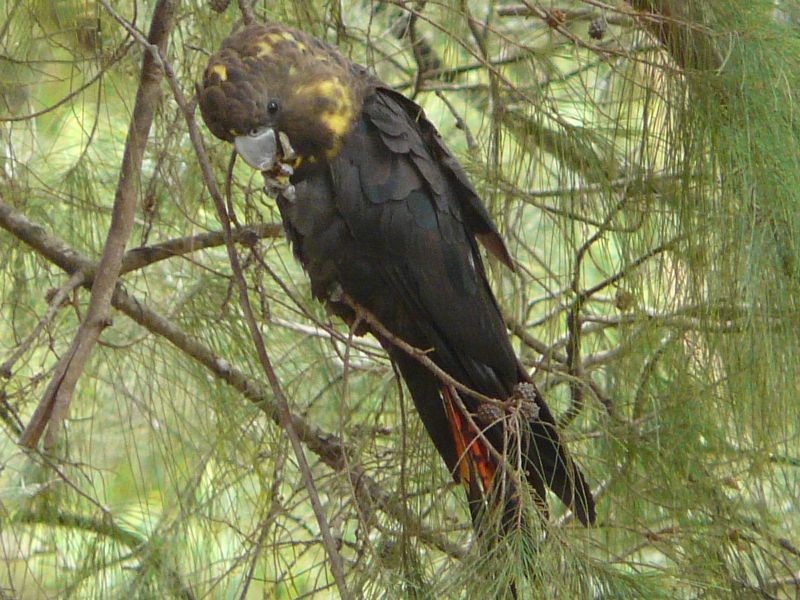
A Glossy Black-Cockatoo extracting casuarina seeds from cones. Only she has yellow on the head, but both sexes have the red tail. Photo: Ian Fraser
Glossy Black-Cockatoos turn up irregularly on Mount Majura, in particular, to harvest the seeds. By trial and error, they select a ‘good’ tree on which most of the cones contain seeds, then settle in for the day. The bird nips off a cone and holds it upside down, nearly always in its left foot.
The big powerful bill is also very precise, nibbling off layers of the woody cone and discarding them as it rotates the cone. Meanwhile, it delicately extracts the seeds until they’ve gone, when it drops the cone and selects another. And repeats, all day.
These cockies are in decline, apparently due to the loss of mature hollow-bearing eucalypts essential for their breeding in ranges nearer to the coast. The casuarina supply, however, doesn’t seem to be the main issue, and for the cockies’ sake and ours, I hope this will always be the case.
Ian Fraser is a Canberra naturalist, conservationist and author. He has written on all aspects of natural history, advised the ACT Government on biodiversity and published multiple guides to the region’s flora and fauna.












